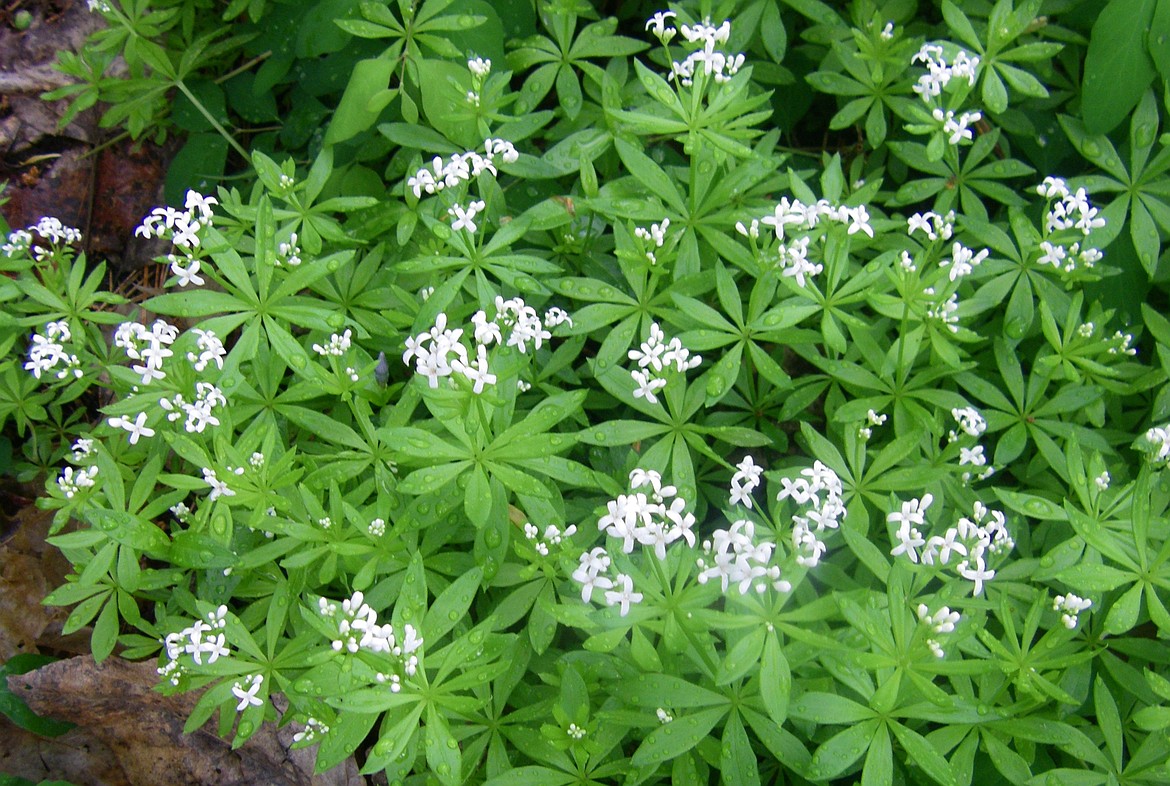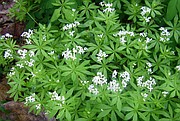Landscapes rock with drama, practicality
VALLE NOVAK Contributing Writer | Bonner County Daily Bee | UPDATED 2 years, 10 months AGO
In my first years – some 40-plus years ago – my gardening was the typical raised-bed layout at the front of the property. Open and sunny, it was great for the veggies which I focused on at that time.
Closer to the house though, a shady, rocky landscape under the trees offered myriad possibilities for a sanctuary garden – which I proceeded to create. Long-time readers will recall my years of what was to become a super learning project, centered on numerous failures – not in growing, but in discovering my sizable, very destructive deer population. Numerous changes in plantis and procedures finally created some successes, the most important of which was to quit “fronting” my large natural rocks with ornamentals, but to use them as planting sites as well. Once I began planting in and around the rocks – using them as focal points instead of backdrop – a “whole nuther” world opened up.
I have an amazing layout of rocks of all sizes and shapes, conveniently spread in the swath of garden space. What an opportunity! I began utilizing them by “tucking” beauties here and there – a trio of Foxgloves – a scattering of violets – Brunnera – Pulmonaria and others. A small-flowered native Clematis was encouraged to crawl across a cluster of large stones instead of climbing upward.
Ferns were – and are a natural for rocks. I collected every native species I could find – and welcomed the big, rangy Bracken ferns as well, which I had from the beginning.
Over the years, I’ve utilized all those rocks – from baseball- to boulder-sized – as showcase and protection for a variety of plants I’ve been able to sustain and maintain. Rocks have become big business in gardens and landscapes nowadays, and you can pay for a really classy, upscale feature if you wish, but if you already have a few biggies scattered here and there, avail yourself of their invitation for a composed rock garden.
Tip: Around May, take a late spring drive up into the mountains – I usually take the road just before reaching Hope. Enjoy the views of our beautiful country while climbing upward into forest lands. Often, melting winter snows release rocks in mini-landslides, and you may find some beauties lying alongside – or even in – the road. Take what’s available but do NOT rip out stones from the ground. Thank Mom Nature for her gifts and leave her unsullied.
One enhancement to your site is a groundcover that will romp over, around and through the area, providing a stable and neutral background. For me, the perfect foil is Sweet Woodruff (Galium odoratum) often referred to as “Lady’s bedstraw” pictured above. Its apparent density is a hoax: the light and airy stems with whorled leaves holding tiny “bouquets” of flowers allow for under-plantings of anything from bulbs to perennial ornamentals which grow up though it with aplomb. Deer will never go into the Woodruff – which as many of you know, has a unique scent making it a natural for tucking into bottles of white wine for “May wine”.
Other possibilities include: Snow-in-Summer (Cerastium) with its attractive wooly grey/green foliage, and fragrant white flowers that form a low-growing mat-like ground cover and accepts sandy, acidic soil; wild creeping Woodland Phlox (Phlox divericata, P. stolonifera) and creeping cultivars make lovely colorful mats in pink or white that not only love acidic soil but handle dry habitat beautifully, as do our native Kinnikinnick with its tiny teardrop leaves, and Prunella vulgaris (Self-heal, Heal-all) and look-alike Ajuga (genevensis) with their pretty blue-flowered, rounded spires and dark green (sometimes to bronze) mat leaves. If your site is quite sunny or dry, such Xeriscape-like habitats also welcome Sedum and other succulents: Hens/chicks and Portulaca (moss rose); Though they are not really dense enough for a practical ground-cover, they fill in sandy, dry nooks attractively.
Tall perennials and bulb plants that intermarry in these sites are legion. Depending on the sunlight, you may consider Goldenrod, bright red Oriental poppies, big grasses, Bear grass, Lavender, Heaths and Heathers, giant Alliums, Purple coneflower (Echinacea purpurea), Sage of all kinds (Salvia); Beebalm (Monarda citriodora); Liatris; Black-eyed Susan (Rudbekia); Mallows (Malva); Lupine, and of course, roses. Minis are perfect for rockeries, and hardy to boot.
There’s no end to your choices – simply take your surroundings into consideration – bright sun, dappled or deep shade, etc., and plant accordingly. And remember too, that rock gardens lend themselves beautifully to pots! Tuck them anywhere – filled or empty, along with other garden art apropos to your landscape theme. Perhaps a birdbath, since you should have a water source nearby to provide for the birds and pollinators which will be attracted to the bright colors and access to nectar your garden provides.
Finally, remember that rocks provide warmth and protection to tender plants during the winter and shelter to toads, garden snakes (love them!), tiny salamanders (have you ever looked at their little hands?) and beneficial spiders (Yes!) in the summertime. Which brings about the reminder – no pesticides – ever! And you also never need plant food or sprays. Nature does all the work! Rock gardens truly do make good sense.
Valle Novak writes the Country Chef and Weekend Gardener columns for the Daily Bee. She can be reached at bcdailybee@bonnercountydailybee.com or by phone at 208-265-4688 for questions between the hours of 8 a.m. to 6:30 p.m. a 208-265-4688.








